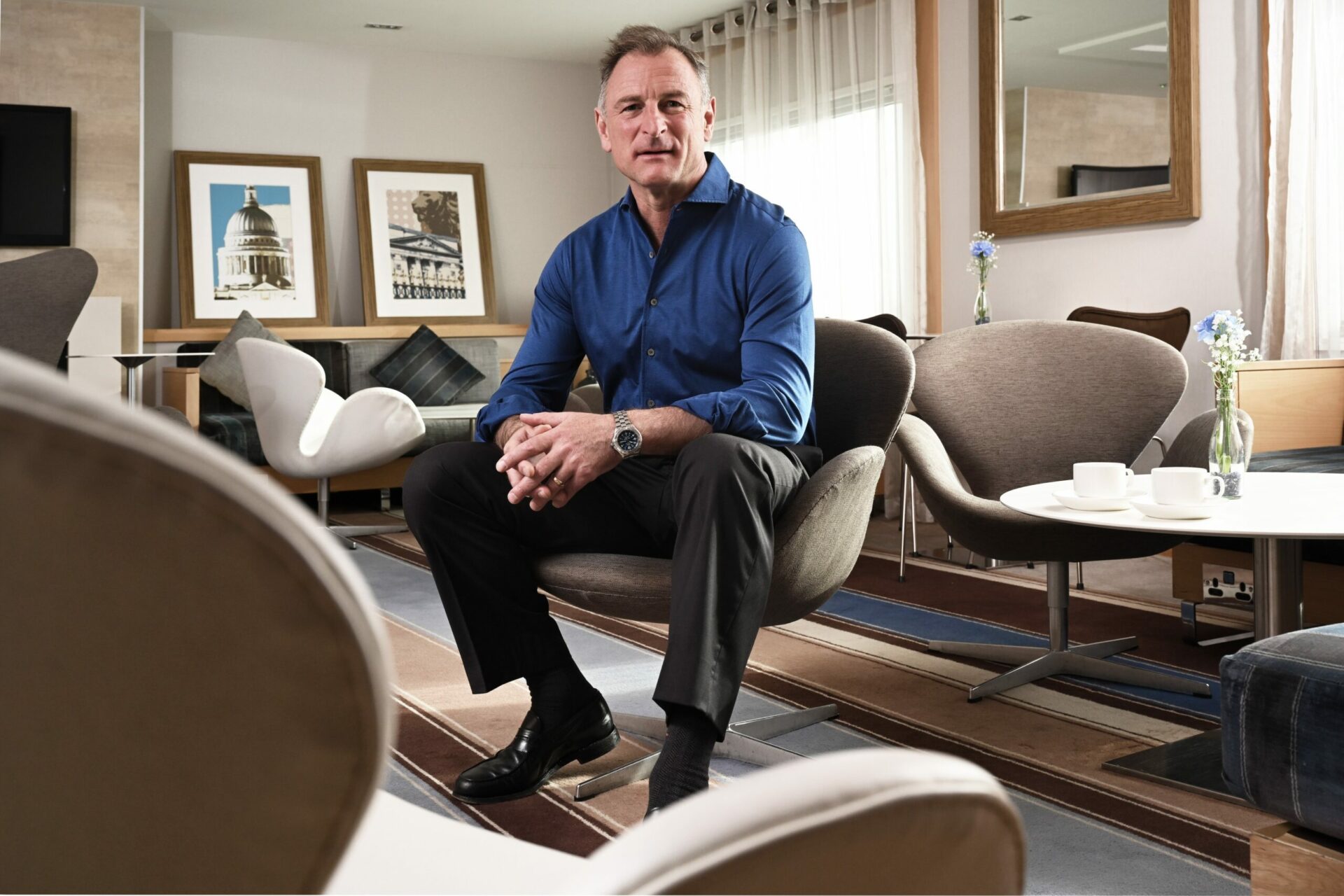
Market and Industry Dynamics
The hospitality industry operates in an extraordinarily crowded marketplace. The industry has rapidly evolved and has established more than 450 brands with 17.5 million rooms, which has intensified competition, altered competitive dynamics and converted traditional differentiators into basic market entry requirements¹. This proliferation creates commoditisation forces that transform brand differentiation from advantageous to essential for survival.
Technology has given consumers instant access to a wide array of choices and the means to quickly distill choices to select precisely what they want and pay for what they value. Online travel agencies systematically commoditise hotel brands by emphasising basic attributes rather than unique value propositions, reducing selection to hygiene factors: bedroom size, price and location.
Contemporary hotel selection now depends on value perception, the experience delivered, alongside trust, ease and values that resonate with guests who have been empowered through the digital world to become much more discerning. The challenge extends beyond marketing. Whilst brand teams articulate compelling visions, operations teams wrestle with the practical reality of delivering these promises through thousands of employees across dozens, sometimes hundreds, of properties.
This article addresses how to create purpose-led guest experiences that bridge this gap between brand ambition and operational delivery. We examine the core principles that underpin successful experience transformation, outline a proven five-phase approach to implementation, and identify the critical success factors that determine whether initiatives deliver sustainable value. The approach demonstrates how to translate brand promises into tangible experiences that guests value sufficiently to pay premium rates for, whilst avoiding the common pitfalls that cause many transformation initiatives to fail. Having established why purpose-led experience matters, we turn first to examining the opportunity and challenge this presents for hospitality brands.
The Opportunity and Challenge for Hospitality Brands
For brands to cut through and win in today’s crowded market requires moving beyond transactional accommodation toward experience-led value propositions. As explored in our analysis of differentiating hotel brands, the opportunity is a source of growth and improvement in brand premium. Hotels that successfully transform experience delivery achieve measurable pricing premiums, stronger direct relationships with guests, reduced distribution costs and improved operational efficiency.
The challenge is translating significant investments in programmes, technology, facilities and people into experiences that truly differentiate, are valued by guests and can be delivered across business functions and hotel operations. Then kept alive and innovated over time with consistency across brand touchpoints, whether it is a brand site, contact centre or hotel operations.
The economics of hotel branding differ fundamentally from other industries. Hotels require hundreds of millions in capital investment to build, renovate or reposition, with much of the experience dependent on human delivery². This creates inherent tension between brand marketers’ ambitions and the financial realities owners face. Brand standards which fail to generate commensurate pricing premiums ultimately undermine both brand value and owner returns.
Many companies over focus on the delivery of investments in hotel renovations, technology improvements and processes and under focus on employee behaviours, expertise, leadership, governance and culture. The result can often be analogous to “operation successful, patient dead”. Brand marketers often over-invest in things they think make the difference without understanding whether consumers will pay for that difference or whether they are failing to deliver what guests truly value.
Success requires analysing the guest needs, brand goals and operating models, determining the changes required and executing a change programme that will deliver a tangible difference to the guest experience. This systematic approach bridges the gap between brand promise and operational delivery, creating guest experiences that generate measurable returns on investment. Understanding this challenge sets the foundation for establishing the core principles that guide effective implementation.
Core Principles
The starting point centres on the desired outcomes, anchored on the brand promise, the experience and feelings desired and the characteristics of the operating model to effectively deliver it. Outcomes can be defined by goals that include guest satisfaction and affinity, brand premium, growth, productivity, ROCE, etc. The operating model importantly covers organisation, resources, delivery approach, management systems, processes, governance and culture.
Customer segments must be defined by both who the guest is and their purpose for staying, as this combination determines their needs and behaviours³. Even the same individual has different needs depending on the purpose of stay: business versus leisure requires entirely different service choreography. Traditional approaches to brand standards fail because they attempt to create one-size-fits-all specifications. Purpose-led experience design instead creates frameworks that enable agility, empowering frontline teams to recognise different guest needs and tailor delivery accordingly whilst maintaining brand consistency.
The brand must come to life across the entire guest journey, requiring both the FEAST framework (Fast, Easy, Accessible, Simple, Tempting) and recognition and personalisation to work together seamlessly. Before guests arrive, FEAST principles ensure digital touchpoints are effortless whilst recognition systems capture preferences at booking. During pre-arrival, arrival and the stay itself, both FEAST and personalisation remain critical: guests expect simple, fast interactions that also recognise who they are and anticipate their needs. Post-stay, these principles continue to matter as follow-up communications must be both easy to engage with and personally relevant. Together, FEAST and personalisation create the seamless, valued experiences that distinguish purpose-led brands.
Purpose-led experiences start with a clear understanding of the economic value equation: what combinations of guest segments, needs and experiences generate both guest satisfaction and pricing power? As we emphasised in our previous article on why customer experience is the growth engine, the fundamental question is how to translate investments in technology, training and process change into brand premiums. Improving efficiency or processes without changing what guests actually experience delivers no pricing power. With these core principles established, we can now examine the structured approach required to translate them into operational reality.
Approach and Success Factors
Implementing purpose-led guest experiences requires a systematic methodology that moves from strategic intent through to operational delivery. The approach outlined below has been refined through numerous implementations across hotel groups of varying sizes and segments. It comprises five interconnected phases, each building on insights from the previous stage whilst maintaining focus on the ultimate goal: delivering experiences that guests value enough to pay premium rates for. Defining the outcomes and defining changes are important starting points, and working through a systematic process to identify changes, design the target state experience and operating model, then designing and delivering through a comprehensive change management programme and plan with buy-in from all team members and stakeholders is key to success.
- Discovery and Alignment
Understanding and aligning the organisation on the brand identity, brand promise and current guest experience are important starting points. Then working with team members to define the level of ambition, target state experience across guest segments, gaps and changes required. Understanding and assessing the current operating model for delivery for strengths, weaknesses, gaps and risk areas completes the initial phase.
The critical work involves codifying what has traditionally existed as abstract concepts. Brand positioning statements must translate into concrete, observable characteristics. This codification defines a customer-centric way of thinking about delivering the brand, identifying things important to brand differentiation. Creating psychological safety, where teams can openly discuss failures without fear of punishment, becomes essential for honest assessment. This alignment creates the foundation for the detailed blueprint design that follows.
- Blueprint Design
Mapping end-to-end guest journeys and brand touchpoints, and defining the experience, feelings, service moments, standards and guidelines help shape the target state. Then identifying current technology and organisational capabilities, processes and existing programmes to improve are all factored as foundations that should then be brought to life and exploited by operations.
Blueprint design maps customer needs and brand essence into the customer journey and across every brand touchpoint. Service blueprinting provides the core technique, distinguishing between frontstage interactions (what guests experience directly), backstage activities (what happens behind the scenes) and support processes (systems, technology and resources required).
As explored in our analysis of digital architecture for hospitality growth, hotels that succeed with experience transformation typically find that 60-70% of required capabilities already exist in some form. The transformation challenge involves integrating, enhancing and fully exploiting these capabilities rather than wholesale replacement. With the blueprint defining what needs to be delivered, attention turns to designing the operating model that will enable consistent execution.
- Design Target Operating Model
This focuses on the internal characteristics of how the organisation will deliver. It includes opportunities to improve organisation structure, ensure the right expertise and fluency, leadership, delivery methodology, training and development, governance, management systems and measurement, and importantly culture, values and behaviours.
The culture of management needs to be empowering and leading rather than managing, particularly important in the hotel industry’s historically hierarchical-based culture. Empowerment proves essential for experience delivery: frontline staff must feel authorised to make decisions that benefit guests.
The operating model includes processes and procedures, governance (who can make what decisions to what degree), management systems (what you measure, how you measure success), and critically, culture around behaviours and values. What you’re trying to do is take a brand concept and translate it into the working lives of thousands of people across hundreds of properties, delivering it every single day, 24 hours a day, 365 days a year. Management systems, particularly what gets measured, profoundly shape behaviour⁴. Progressive hotels are implementing balanced scorecards that give equal weight to guest experience metrics, operational metrics and financial metrics. Having designed what needs to change and how the organisation will operate, the critical challenge becomes bringing these changes to life through effective change management.
- Change Management Delivery
For each department and function this requires setting out and then delivering awareness, creating desire, training knowledge, developing the right abilities and reinforcing change and standards. Change management ensures you are constantly sensitive to what issues people face. The only way to make this work for people is making this project theirs.
Change management in hotel environments faces distinctive challenges. When head office representatives arrive saying “you’re going to do it this way now”, the reception is predictably poor. They must be brought into the process, involved in the process, trained not in “here’s what you will do” but in understanding the rationale.
The ADKAR model (Awareness, Desire, Knowledge, Ability, Reinforcement), developed by Prosci and widely adopted in hospitality⁵, provides a useful framework. Reinforcement prevents regression to old habits, ensuring changes live over time rather than disappearing after three months when staff turnover occurs. Even with robust change management, success depends on recognising and mitigating common risks and challenges.
- Critical Success Factors
Recognising risks and challenges to implementation ensuring adequate mitigation and contingency are in place is essential. Common challenges include:
Resistance to change: Fear of the unknown and lack of understanding are common. This can manifest itself into passive resistance, active opposition, or simply a lack of engagement.
Communications: A comprehensive two-way communication and feedback plan is essential for keeping alignment across team members and stakeholders. Establish from the beginning not just when and how you communicate, but how you get feedback to and from frontline staff.
Planning: When you have lots of changes happening simultaneously, plan every element: how you make changes, when you make changes, how you deliver them. Effective planning includes identifying resources, being clear on timelines, deliverables and addressing risks.
Defining clear objectives: Ensure objectives are specific, measurable, achievable, relevant and time-bound. Vague objectives like “improve guest experience” provide no guidance.
Identify target audience: Be clear about impact on guest segments and team members. Consider stakeholders beyond those delivering changes: purchasing teams affected by dietary requirement changes, finance teams adapting to new metrics, revenue management recalibrating for pricing strategies.
Assess the impact of change: Anticipate potential changes to skill sets and resource requirements. Tailor training programmes to address specific needs.
Timelines
Typical timelines from concept to delivery take three months, independent of company size. Rollout depends on the number of properties and desire for phasing and sequencing delivery. Leading hotel groups typically plan 12-18 month rollouts from pilot completion to full deployment for large portfolios.
Creating purpose-led guest experiences offers a path to genuine differentiation and sustainable value creation. The big picture addresses a crowded marketplace with hundreds of brands and little differentiation: how do you differentiate and bring it to life? How do you translate investments into brand premium?
For hotel groups willing to embrace customer-centric operating models, implement systematic transformation approaches and persist through inevitable challenges, the rewards are considerable.
PACE Dimensions is a research and consulting firm founded in 2010 with deep industry experience and a practitioner’s expertise in helping Travel & Hospitality companies bring their brands to life through its Brand, Commercial and Operations organisations. It couples research insights with its proven methodologies and experience to improve the likelihood of success. Its consultants are all experienced with proven track records of success. We have specific experience working for a number of large hotel groups as well as smaller-owned and managed companies in the upscale and luxury segments.
References
¹ STR Global Hotel Industry Statistics (2024). https://str.com/data-insights/news/press-releases
² Cornell Center for Hospitality Research (2024). “Brand Standards and Property Performance.” https://sha.cornell.edu/research/centers/chr/
³ IDEO (2024). “Understanding Guest Segmentation in Hospitality.” https://www.ideo.com/
⁴ McKinsey & Company (2024). “Performance Management in Hospitality.” https://www.mckinsey.com/industries/travel-logistics-and-infrastructure
⁵ Prosci (2024). “ADKAR Model for Change Management.” https://www.prosci.com/methodology/adkar








